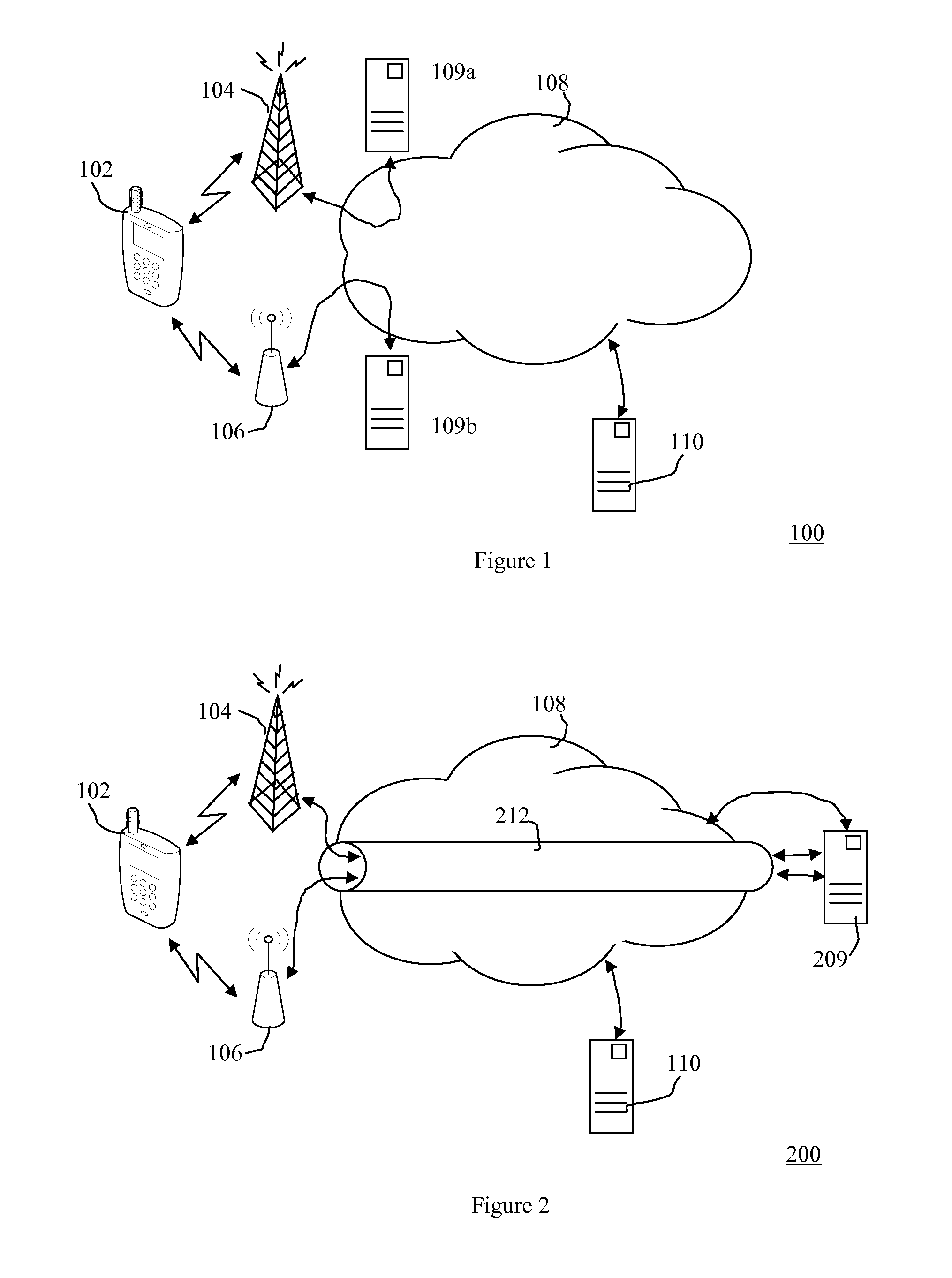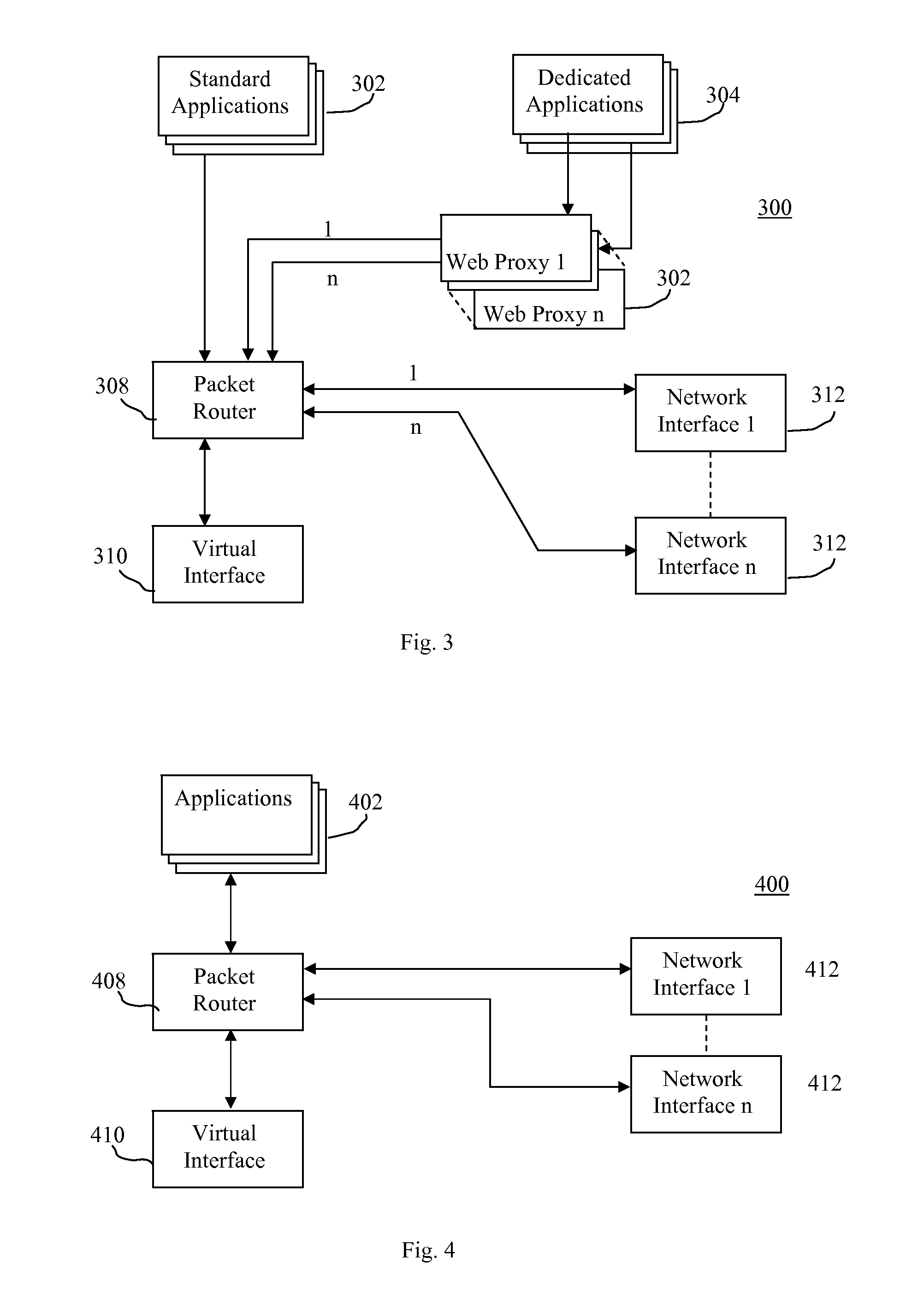Accessing local network resources in a multi-interface system
a multi-interface system and accessing local network resources technology, applied in the direction of connection management, instruments, digital computers, etc., can solve the problem of preventing the client device from accessing network resources
- Summary
- Abstract
- Description
- Claims
- Application Information
AI Technical Summary
Benefits of technology
Problems solved by technology
Method used
Image
Examples
second embodiment
[0033]Referring to FIG. 4, software modules executing on the client device 102 in accordance with the invention are illustrated generally by numeral 400. The software modules include applications 402, a packet router 408, a virtual interface 410, and a plurality of network interfaces 412. Unlike the previous embodiment, the present embodiment does not use web proxies 306 to offload traffic from the tunnel. Rather, in the present embodiment, the virtual interface is configured to rewrite the packet source address, thereby affecting the packet routing, as will be described below.
[0034]The virtual interface 410 is configured with a static, private Internet protocol (IP) address, such as 192.168.1.1 / 24 for example. The IP address assigned to the virtual interface is different from the IP addresses on all other network interfaces. In the present embodiment, the IP address for the Wi-Fi interface is 1.1.1.1 / 24 and the IP address for the 3G interface is 22.2.2 / 24.
[0035]The virtual interfac...
third embodiment
[0049]However, some operating systems may not be able to readily replace source and destination IP address as described above. Accordingly, in a third embodiment, IP header-fields other than the IP address can be used to manipulate routing decisions. For example, the Linux kernel enables packet routing based not only upon the IP address, but also on other fields such as the Terms of Service (ToS) fields in an IP packet. By mapping different values to the ToS fields, it is possible to route packets in a similar manner as discussed above with regard to IP address replacement. Thus, client devices 102 that do not support source address routing may be similarly configured, but using a different IP header field that is supported. This can be extended to include classifying packets based on any field in the packet, using Layer 7 inspection. Prepending a custom header, which is ignored by the network interface 412, would make it possible to route the packet based on any field in the packet...
fourth embodiment
[0051]In a fourth embodiment, the virtual interface 410 is set as a default interface for the client device 102. Accordingly, the virtual interface 410 captures all of the traffic generated from or destined for the applications 402 and acts as a transparent protocol proxy. When a connection is made from a client application 402 to a destination server 110, the virtual interface 410 will see the connection request message. Instead of forwarding this connection request on, the virtual interface 410 will respond to the client application 402 as if it were the destination server 110. Concurrently, the virtual interface 410 will establish a connection to the destinations server 110 over one of the specific network interfaces. This connection request will be properly routed because the connection from virtual interface 410 will originate from the source of the network interface 412 which this connection has been determined to be assigned to. This assignment is performed in the same manner...
PUM
 Login to View More
Login to View More Abstract
Description
Claims
Application Information
 Login to View More
Login to View More - R&D
- Intellectual Property
- Life Sciences
- Materials
- Tech Scout
- Unparalleled Data Quality
- Higher Quality Content
- 60% Fewer Hallucinations
Browse by: Latest US Patents, China's latest patents, Technical Efficacy Thesaurus, Application Domain, Technology Topic, Popular Technical Reports.
© 2025 PatSnap. All rights reserved.Legal|Privacy policy|Modern Slavery Act Transparency Statement|Sitemap|About US| Contact US: help@patsnap.com



